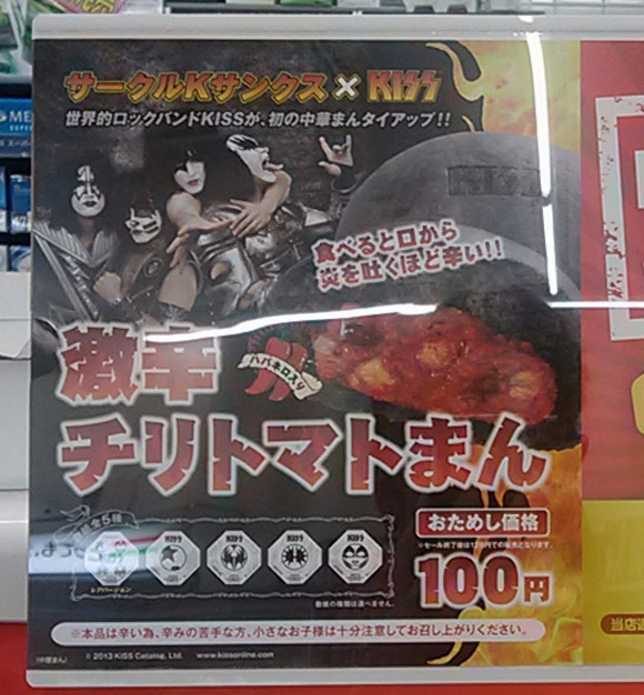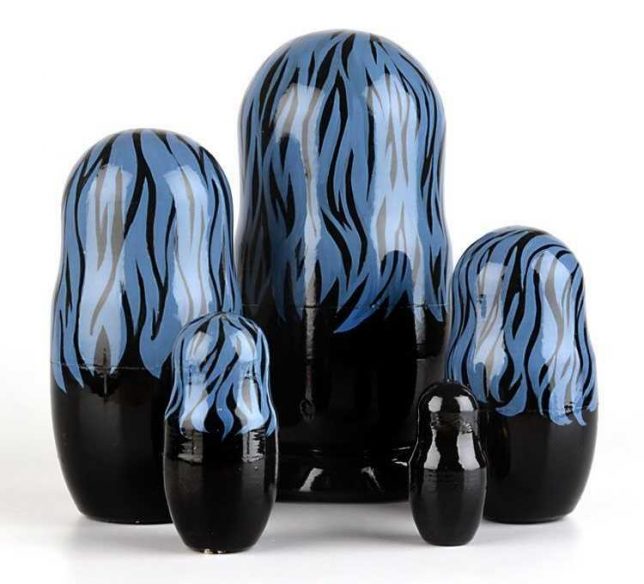 |
| Two cameras, two lens-mounts, separated by almost six decades. The new Nikon Z7 (left) is the first of a brand-new breed of Z-mount full-frame Nikon cameras, just as the original Nikon F (right) debuted the legendary F mount in the late 1950s. |
This interview comprises on-record portions drawn from several conversations with multiple Nikon executives dating back to August, primarily those which took place in Tokyo following the launch of the Z system, and in Cologne, Germany, during the Photokina trade show.
Please note that responses to our questions were provided variously by multiple high-level executives, engineers and marketing specialists. These exchanges happened at different times, and in all cases, our conversations were conducted via an interpreter. As such, since individual attribution is impossible, responses have been combined and anonymized. The following interview has been edited for clarity and flow.
What were the biggest challenges you faced when developing the Z mount?
For the mount, the biggest challenge was to finalize the specifications. This is a new system and we’re looking ahead into the future for our users. We want them to use the Z mount for a long time, so we wanted to make sure that the specifications would [support] use for the long-haul.
For lenses, taking the Z 35mm F1.8 for example, we were determined to exceed the [previous] performance level, which was very challenging. Manufacturing was challenging too because we wanted to exceed [previous] lens specifications and performance.
In the camera bodies, we had to maintain robustness, while making them smaller and lighter. This was a challenge for us.
 |
| The Nikon Z mount is intended to be at least as futureproof as the legacy F mount – hopefully, according to Nikon representatives – it will still be current in 100 years’ time. |
Nikon Z-mount lenses are designed for cameras that are capable of high resolution video as well as stills – how does this requirement affect the design?
Our optical design had to change. There are five elements that are improved significantly. One, we minimized aberrations, in a very well-balanced manner. Secondly, we improved resolution, towards the edges of the frame – not just the center. Thirdly, we improved point image performance [coma] towards the edges of the frame. Fourth, bokeh is natural, and beautiful. And finally we minimized ghosting and flare effects as much as possible. All of these improvements allow us to render sharp, very ‘real’ images.
Mechanically speaking, we improved focus speed, and focus is very quiet and very smooth in movie recording. That smoothness is really improved, and also movie users can adjust focus speed, from slow to fast.
We’ve tried to maintain the same level of operability between the D850 and the Z7
One of the concerns that we have with the Z6/7 is that their autofocus behavior and user experience is so different to DSLRs like the D850. Why did Nikon make this decision?
The D850 has a dedicated autofocus sensor, but in the Z7 we have on-sensor phase-detection autofocus. Each system has its own distinct features and its own strengths. We looked at the differences between the two, so that we could satisfy our customers’ needs by utilizing the strengths of each system. It’s not a question of which system is better, each has its own strengths.
When we think about usability of the autofocus systems, we’ve tried to maintain the same level of operability between the D850 and the Z7. Our priority is to make sure that our [Z7] customers feel that they have the same level of functionality and usability [as they do with the D850].
 |
| The Nikon Z7, pictured here with the 35mm F1.8, one of three compact lenses announced at the debut of the new Z mount, in August. |
Do you intend to be more proactive in the Z-series, to respond to feature requests via firmware?
We need to look at our camera models, their features and characteristics, and our customers’ needs. With some models it’s better that we update their functionality more often than others.
But upgrading a camera isn’t easy. Also, as functionality evolves, software becomes even more complicated to design and update. However, the environment is changing rapidly, and due to the accelerated evolution of the functions, maybe we have to accelerate our response. We will make sure that we develop and upgrade [our cameras’] functionalities in order to satisfy our customers’ needs.
Our goal is to become number one in the full-frame market
Do you have an internal target for percentage of sales represented by Nikon mirrorless versus DSLR?
We have internal sales targets for each model, but we cannot disclose the figures. Our goal is to become number one in the full-frame market for both mirrorless and DSLRs.
What is your target timeframe for achieving this goal?
That’s a difficult question to answer – we cannot disclose the specific timeline, but we will make every effort to hit the target of being number one as soon as possible. We believe that we can achieve the number one position maybe quite soon. A lot of manufacturers have launched full-frame mirrorless cameras, but sales of our Z6 and Z7 are really robust, which gives us confidence.
Since DSLR and mirrorless have their own benefits and merits, they can co-exist
How do you expect the Z6 and Z7 to affect sales of Nikon’s DSLRs?
Since we launched the Z6 and Z7, demand for the D850 has remained very robust and stable. Since DSLR and mirrorless have their own benefits and merits, they can co-exist, and they will. However, its unavoidable that the market will shift more and more towards mirrorless. Right now, mirrorless market share is around 40% but by 2020 and afterwards we expect that mirrorless will surpass DSLR. For now we think they can co-exist.
At launch, the Z system is a full-frame system. Could it support DX (APS-C) format cameras in future?
We are not thinking about other formats yet. But we’re monitoring market trends, and we’re not ruling anything out [in future].
 |
| From left to right: The Nikon D850, the new Z7 and it’s main competitor, the Sony a7R III. |
When you were developing the Z6 and Z7, what were your key benchmarks, and measures for success?
In one word, our benchmark for the Z7 was the D850. We wanted the Z7 to be at least on the same level as the D850. We have a lot of accumulated knowledge from our DSLRs, and we gathered information from our customers to make sure that we really met their needs and their demands. For example a comfortable grip, a good viewfinder experience, and the operational feel of pressing the shutter. We have to make sure that we can match or exceed these qualities [of our DSLRs] before putting a [mirrorless] product on the market. These are the expectations that people have of Nikon as a camera maker.
In-body V.R. is a new concept in the Z6 and Z7, and we set a very strict target for the number of stops of correction. When it comes to lenses, we can’t disclose the exact numerical performance targets, but we’ve already talked about the five ways in which we aimed to improve the lenses, plus operability and user-friendliness. We actually set some very ambitious targets.
These are high-performance cameras and lenses – how long has the system been in development?
We cannot disclose the specific number of years.
How important was it to Nikon to incorporate high-quality video features in the development of the new Z-mount cameras?
An increasing number of customers are looking at stills and video and they want both of them. Therefore we focused on improving video performance, which also affected body and lens design. We wanted to make sure that the new cameras would have very good still and video qualities.
We want to be recognized as a company that provides tools for video professionals
We love feedback, because it leads to better products. We want to be recognized as a company that provides tools for video professionals. If we hear from professionals that now, finally, they can do the kinds of jobs they want to with our products, that would be great. We’ve provided a set of functions, including N-Log, and if any of them can be useful, we’re very happy about that.
We are now starting to communicate with the community of professional videographers because we have really improved the video performance of our cameras and lenses and we’re proud of that, so we want to communicate this to the community.
 |
| The Nikon 1 V3 was the last – and arguably best – of the erstwhile 1 System mirrorless camera lineup. Although the 1 System didn’t last, Nikon tells us that a lot of the technologies pioneered in cameras like the V3 was utilized in the development of the full-frame Z mount. |
How much technology and experience gleaned from creating the 1-system was brought into the new Z system?
That’s a hard question to answer. There’s a lot we could say, but it’s hard to put into words. The basis of the technology comes from Nikon 1. Especially the technology behind the imaging sensors. Not the [hardware] technology itself but definitely the concept and basic principles.
Of course, the the F system and the 1 system represent the basic foundation of everything that we do, but with the Z system the goal was to go beyond those predecessor products. The larger volume of data being communicated [between camera and lens] is a huge benefit, and that’s one of the biggest improvement between previous models and the new Z-series.
The F system and the 1 system represent the basic foundation of everything that we do, but with the Z system the goal was to go beyond
The concept for the development of the new series, although obviously to some extent they are based on the F and 1 systems that came before it, is to listen to those users and hear what they like and don’t like, and look into the future. People might be happy with what they have right now, but maybe those technologies won’t work in the future. We can’t be myopic about it.
It’s very important to us that our F mount customers can use their lenses with the Z mount, for example. We had to consider that.
Did any of the engineers that worked on the 1 system go on to work on the Z6 and Z7?
Yes – part of the development team from the Nikon 1 was involved in developing the Z6 and Z7.
With the next generation of Z mount cameras, is it more urgent to target professionals, or beginners?
While we are focusing on mid-to-high end models, entry-level users who have never used an interchangeable lens camera are very important to Nikon. Both entry-level and professional users are equally important to us, and we aim to expand the Z mount system lineup to appeal to a wide audience.
 |
| The iPhone X/S, and other smartphones of its ilk are small, powerful, water-resistant and take great photographs. According to the Nikon executives that we spoke to, the threat to traditional camera manufacturers from mobile devices, jam-packed with computational photography technology, is acute. |
Will future Z series cameras offer optical V.R. in addition to in-body stabilization?
We intend to continue with the development of optical stabilization. If there is a benefit of the functionality, we will continue to employ [optical V.R.] as an option. For telephoto lenses, optical stabilization is very beneficial. When it comes to wide-angle zooms, in some cases it is also beneficial.
What are the biggest challenges facing Nikon in the future?
This is a hard question to answer. Because of the advent of the smartphone, the digital camera has shrunk. However, the mirrorless camera market has been revitalized, and we believe that Nikon can expand this market. Another challenge is that if computational photography technology advances rapidly, maybe smartphones will be be able to produce images that are as good as interchangeable lens cameras. If this happens, it will be a real challenge.
The number of people taking photos is growing, and the number of photos being taken is also growing
However, because of smartphones, the number of people taking photos is growing, and the number of photos being taken is also growing. So maybe we can combine hardware and imaging technologies where we can see a business opportunity to expand into camera, software applications, b to b [etc.] there are many possible opportunities for us.
So many people take photos with their smartphones because they want to post them to Instagram or Facebook, or other social networking services. However, some of these people are not really satisfied by the quality of the photos taken on their phones. This segment of people are looking for a camera which can give them better quality images, but maybe they’ve never used a dedicated camera ever in their lives. I am sure that this segment of the audience is growing and [they represent] a great opportunity.
Will we see fewer DSLRs released by Nikon in future?
Our strategy is to [market] both DSLR and mirrorless. We launched the D3500 [alongside the Z6/7] and we’re planning to launch more DSLR models in the future.
The F mount was Nikon’s premier lens mount for 60 years – how far into the future are you looking for the Z mount? Another 60 years?
At least another 60 years! I was about to say 100. Hopefully it will last indefinitely – that’s why it’s so important for us to look into the future, and why such a high volume of data communication [in the Z mount standard] is so important.
Editors’ note: Barnaby Britton
This has been a big year for Nikon, and I suspect one that Nikon’s engineers and executives have been eagerly awaiting for a long time – to say nothing of their customers. Nikon did a fine job of maintaining and updating the F mount for as long as it did, but the question was never if the company would replace it with a redesigned standard for mirrorless, but when.
The Z mount of course is Nikon’s second mirrorless camera mount, after the 1 mount, designed around the 1″ sensors used in the company’s various 1-series ILCs from 2011 until the discontinuation of the lineup earlier this year. It was interesting when speaking to executives to learn that some of the technologies from Nikon’s 1 System (and in fact some of the engineers that worked on it) were integral to the development of the Z mount.
The resulting mount is a very, very different standard to Nikon 1, and different again to the 60-year old F mount, despite being designed around the same sensor format. Clearly the company is looking ahead – a long way ahead, judging by the ‘100 years’ comment in our interview – and it will be interesting to see how Nikon develops its Z-mount lens lineup in the coming months and years. Unlike Canon, Nikon publishes roadmaps, and I suspect that the Z7 and Z6’s true potential (and that of their inevitable successors) will become clear once lenses like the planned 24-70mm F2.8 start to become available.
The Z7 really is intended to replicate as far as possible, the performance and durability of the D850
So what did we learn from this interview? For one thing, we learned that Nikon wants to be the number one full-frame manufacturer, and it hopes to achieve that position fairly soon. That’s a lofty goal, and a bold statement, but the Z6 and Z7 are bold products. As far as Nikon’s executives are concerned, the Z7 really is intended to replicate as far as possible, the performance and durability of the D850 – a very popular camera which has been backordered almost since the day it was announced.
To the company’s credit, we think that the company has largely succeeded in this goal (although there are some things we’d like to see improved) and that’s no small feat. It’s a bit disingenuous to call the Z6/7 first-generation cameras, but they’re certainly first attempts at something very new for the company, and compared to Canon’s more cautious approach with the EOS R, straight out of the gate they’re powerful, highly competitive ILCs. Whether there is any room for APS-C products in Nikon’s future Z-mount lineup, however, is unclear.
The challenge of building a reputation as a video manufacturer is one that Nikon hasn’t really been faced with tackling up to now
While Nikon has made some overtures towards videographers before now (lest we forget, the D90 was the first DSLR to shoot video and the D850 is a very capable 4K video camera) the challenge of building a reputation as a video manufacturer is one that Nikon hasn’t really been faced with tackling up to now. The Z7 and (especially) the Z6 have a lot to offer these users, and it will be interesting to see how Nikon approaches the challenge of becoming a major player in this space, alongside more experienced competitors like Sony, Canon and Panasonic. It’s reassuring to see that whatever challenges Nikon faces in the future, a lack of confidence doesn’t seem to be one of them.
Articles: Digital Photography Review (dpreview.com)




























You must be logged in to post a comment.